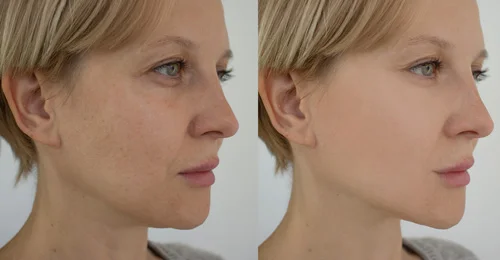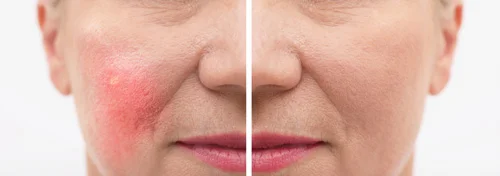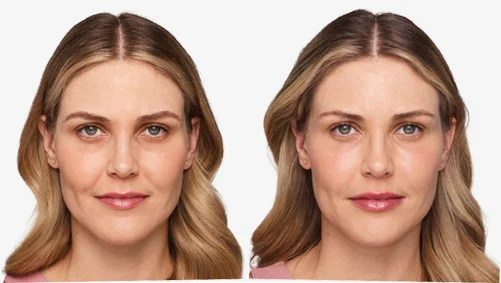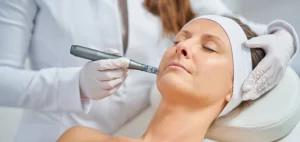Achieving beautifully contoured cheeks is a common aspiration, and choosing the right filler can turn that aspiration into reality.
In today’s blog, we’ll delve into everything you need to know about selecting the best filler for cheeks, covering their costs, treatment procedures, and showcasing stunning before and after transformations.
Whether you’re looking to restore lost volume or enhance your natural features, we’ll highlight the top options available, empowering you to make an informed decision for a rejuvenated appearance. If you’re in search of comprehensive cosmetic enhancements, consider exploring options for Best Botox treatment in Manhattan, New York City to complement your cheek enhancement goals seamlessly.
What Are Cheek Fillers?
Cheek fillers are cosmetic treatments designed to add volume to the cheeks, creating a fuller, more youthful appearance. They involve injectable materials such as hyaluronic acid and polysaccharides, which are FDA-approved for safe use in augmenting facial contours. While generally safe, they can occasionally cause issues like scarring or lumps.
What Are The Best Fillers For Cheeks?
There are several types of fillers that are commonly used for cheek augmentation, each with its own pros, cons, and associated costs. Here are six popular options along with approximate costs:
Hyaluronic Acid Fillers (e.g., Juvederm, Restylane)
These are among the most popular cheek fillers. These fillers add facial volume and reduce signs of aging. However, it is a naturally occurring substance found in your skin. They typically cost between $600 to $1,200 per syringe, depending on the brand and the provider.
Calcium Hydroxylapatite Fillers (e.g., Radiesse)
These fillers provide longer-lasting results compared to hyaluronic acid fillers and usually cost between $700 to $1,500 per syringe. These fillers help to stimulate natural collagen production and are typically used for deeper lines and wrinkles.
Poly-L-Lactic Acid Fillers (e.g., Sculptra)
These dermal fillers stimulate collagen production, providing gradual and long-lasting results. They typically cost around $800 to $1,500 per vial.
Polymethyl Methacrylate (PMMA) Fillers (e.g., Bellafill)
These are semi-permanent fillers that provide long-lasting results but require careful dermal filler injections due to their permanence. Bellafill is FDA-approved for the correction of nasolabial folds and acne scars. Costs range from $800 to $1,500 per syringe.
Autologous Fat Transfer
This involves harvesting fat from one part of your body (usually through liposuction), processing it, and then injecting it into the cheeks. Costs can vary widely depending on the extent of liposuction required and other factors but typically range from $2,000 to $5,000 or more.
Silicone Fillers
Silicone injections, while once popular, are now controversial due to the risk of long-term complications. Costs can vary, but they are generally cheaper upfront, ranging from $500 to $1,000 per syringe.
What is the Best Filler for Cheeks for Older Women?
For older women, fillers like Juvederm Voluma or Radiesse dermal fillers are often recommended due to their ability to provide long-lasting volume and support.
What is the Best Cheek Filler for Wrinkles?
Hyaluronic acid fillers such as Restylane Lyft or Juvederm Voluma are effective cheek dermal fillers for treating wrinkles on the cheeks, with costs ranging from $600 to $1,200 per syringe.
What is the Best Injectable Filler for Hollow Cheeks?
Sculptra, a poly-L-lactic acid filler, is ideal for hollow cheeks as it stimulates collagen production over time. It typically costs between $800 and $1,500 per vial.
What is the Best Filler for Sunken Cheeks?
Polylactic acid fillers like Sculptra are also recommended for sunken cheeks due to their collagen-stimulating properties and natural-looking results.
What is the Best Dermal Filler for Cheeks?
For cheeks, Juvederm Voluma and Radiesse are among the top choices due to their long-lasting effects and ability to enhance cheek contours.
What are the Risks of Having Cheek Fillers?
While generally safe, these injectable fillers carry risks such as allergic reactions, infection, or migration of the filler material. The risk factors tend to vary based on individual reactions and application techniques.
What is The Most Risky Filler?
The most risky filler is often considered to be permanent fillers like PMMA (Bellafill), due to the potential for long-term complications and difficulty in removal.
What’s the Procedure for a Cheek Filler?
The procedure involves a consultation with the best cheek filler specialists, topical anesthesia, precise cheek filler injections into targeted areas of the cheeks, and post-procedure care instructions.
How Much Dermal Fillers is Required in Cheeks?
The amount of cheek dermal filler needed varies based on individual anatomy and desired results. Typically, 1-2 syringes are sufficient for initial volume enhancement.
Are There Any Side Effects of Cheek Fillers?
Common side effects include temporary swelling and tenderness at the injection site. These usually subside within a few days to a week. Bruising is a common side effect of dermal filler treatment.
What are the Benefits of Having Cheek Fillers?
Benefits include enhanced facial contours, reduced signs of aging, improved symmetry, and minimal downtime compared to surgical options.
How Long Does Best Filler for Cheeks Last?
- Hyaluronic Acid Fillers: 12-18 months
- Calcium Hydroxylapatite Fillers: Up to 18 months
- Poly-L-Lactic Acid Fillers: 2 years or more
- PMMA Fillers: Permanent
- Autologous Fat Transfer: Variable, but they can last the longest
- Polycaprolactone Fillers: Up to 2 years
Are Cheek Fillers Dangerous?
Cheek fillers are generally safe when administered by a certified aesthetician – However, risks exist, so it’s crucial to choose the best cheek filler and have it administered by an experienced specialist.
What Cheek Filler Gives the Best Results?
The best results often come from hyaluronic acid fillers like Juvederm Voluma, which are known for their natural look, longevity, and safety profile.
How to Get a Cheek Lift with Fillers?
Cheek lift with fillers involves strategic placement to lift and contour the cheeks, achieving a more youthful appearance without surgery.
Cheek Filler Before and After
For visual examples of cheek filler results, see the following:

1ml Cheek Filler Before and After

2ml Cheek Filler Before and After

4ml Cheek Fillers Before and After

Mid Face Filler Before and After

Cheek Filler Swelling Stages

Minimal swelling is common post-procedure.
Cheek Fillers Gone Wrong

Round Face Cheek Filler Before and After

Voluma in Cheeks Before and After

How Much Cheek Filler Do I Need?
The amount of filler required depends on individual anatomy and aesthetic goals, determined during consultation with a provider.
How Many Syringes of Fillers for Cheeks?
On average, 1-2 syringes are initially used for cheek enhancement, with additional sessions for optimal results if needed.
Is Sculptra or Juvederm Better for Cheeks?
Both Sculptra and Juvederm (Voluma) have unique advantages. Sculptra stimulates collagen production over time, while Juvederm Voluma provides immediate volume. The choice depends on desired longevity and treatment goals.
Is Restylane or Juvéderm Better for Cheeks?
Restylane and Juvederm are both hyaluronic acid fillers but differ in formulation and results. Restylane Lyft is often preferred for its lifting effect, while Juvederm Voluma provides volumizing results. Consulting experts with extensive knowledge of facial anatomy can help determine the best option.
Where Can You Get Cheek Fillers in Manhattan, NYC?
You can consider Syra Aesthetics for cheek filler treatments in Manhattan, NYC. They have certified doctors who can provide consultations and perform the procedure. It’s always a good idea to schedule a consultation to discuss your specific needs and expectations before proceeding with any cosmetic treatment.
Frequently Asked Questions (FAQs)
What cheek filler gives the best results?
There’s no single best filler. It depends on your desired outcome and individual factors. Popular options include hyaluronic acid (Juvederm, Restylane) and poly-L-lactic acid (Sculptra). A consultation with a board-certified dermatologist or plastic surgeon can help determine the right choice for you.
What is the best age to get cheek fillers?
Age isn’t the only factor. It’s more about noticing volume loss and wanting a fuller look. With the cheek filler for volume loss, you can get a fuller look.
Consultations can start in your 30s or 40s, but focus on what bothers you, not just a number.
What is the most natural-looking filler?
Hyaluronic acid fillers often get mentioned for a natural look because they attract water, adding volume that mimics your body’s substances. A skilled injector plays a big role too, so finding an experienced professional is key.
Which Dermal Filler Lasts The Longest?
Fillers vary in longevity. Some hyaluronic acid fillers can last 12-18 months, while poly-L-lactic acid stimulates collagen production for potentially longer effects (2-3 years). However, results aren’t guaranteed and top-ups might be needed.
Which cheek filler lasts 2 years?
Sculptra (poly-L-lactic acid) is a filler often cited for potentially lasting 2 years. But remember, individual results may vary. Consultation with a professional can give you a clearer picture.
What is the best filler for cheek augmentation?
Many fillers work well for cheek augmentation, but hyaluronic acid and poly-L-lactic acid are popular choices. Again, a consultation can help determine the best option for your goals.
Will 1 ml or 1 syringe of cheek filler make a difference?
The filler is usually measured in milliliters (ml). One syringe may contain varying amounts, so 1 ml isn’t always equal to one syringe. Discuss the amount needed with your doctor to achieve your desired outcome.
How many syringes of Voluma do you need for the cheeks?
Voluma (a hyaluronic acid filler) amount for cheeks depends on your individual needs and desired outcome. A consultation with a professional can determine the right amount for you.

About The Author
Dr. Syra Hanif M.D.
Board Certified Primary Care Physician
Dr. Hanif is the Director of Aesthetic Medicine. She is a board-certified physician in Aesthetic Medicine who specializes in using non-surgical alternatives in order to enhance one's appearance through Botox and fillers.
Read More











